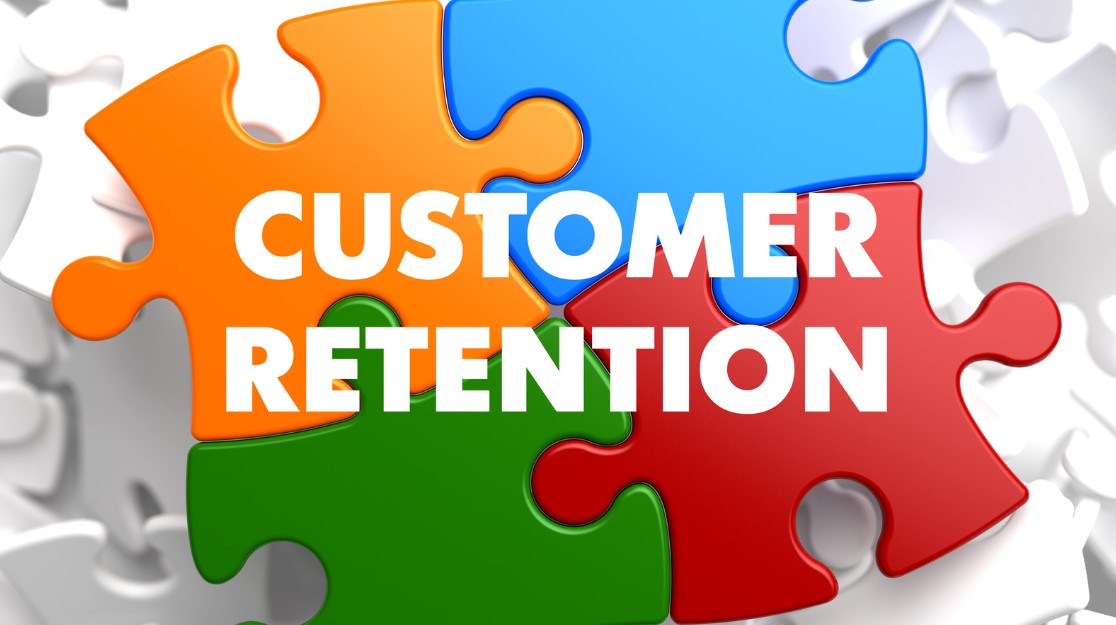Customer retention management refers to the strategies and actions taken by businesses to encourage customers to remain loyal to their brand over a long period of time. It focuses on improving customer loyalty and fostering strong relationships to enhance engagement and boost business growth. This includes understanding the customer experience, measuring key retention metrics, and implementing effective strategies to retain customers.
When it comes to running a successful business, customer loyalty plays a crucial role. Acquiring new customers can be costly, but by prioritizing customer retention, businesses can improve their bottom line and build a solid foundation for long-term success.
In this article, we will explore the importance of customer retention for businesses, key metrics to measure, effective strategies to retain customers, examples of successful customer retention initiatives, and the concept of a customer retention program.
Whether you are a small startup or an established company, enhancing customer loyalty should be a top priority. By implementing customer retention management strategies, you can improve customer satisfaction, foster lasting relationships, and achieve sustainable business growth. Let’s dive in!
Why is Customer Retention Important for Businesses?
Customer retention is crucial for the success and growth of businesses. By implementing effective customer retention strategies, companies can cultivate long-term relationships with their existing customers, increase customer lifetime value, and achieve sustainable business growth.
One of the main reasons why customer retention is important is because it is more cost-effective to retain existing customers than to acquire new ones. According to research, acquiring new customers can cost five times more than retaining existing ones. By focusing on customer retention, businesses can save on marketing and sales costs, allowing them to allocate resources more efficiently.
Moreover, retained customers tend to spend more over time. They have already established trust in the brand and are familiar with its products or services. This familiarity makes them more likely to make repeat purchases and explore additional offerings. As a result, their lifetime value increases, contributing to greater revenue for the business.
Another benefit of customer retention is that retained customers often become brand advocates. Satisfied customers are more likely to recommend a brand to others, leading to organic word-of-mouth marketing and increased customer acquisition. Positive recommendations from loyal customers can significantly impact the reputation and growth of a business.
Implementing customer retention best practices is key to building strong and loyal customer relationships. This involves understanding customers’ needs and preferences, providing personalized experiences, delivering exceptional customer service, and consistently engaging with customers through various channels.
Customer Retention Best Practices:
- Develop and maintain a clear communication strategy to stay in touch with customers and keep them informed about new products, offers, and updates.
- Create a customer loyalty program that rewards customers for their ongoing support, encouraging repeat purchases and fostering a sense of exclusivity.
- Offer exceptional customer service by addressing queries and issues promptly, demonstrating care and attentiveness to customer needs.
- Provide personalized experiences by leveraging customer data to tailor recommendations and offers to individual preferences.
- Regularly seek customer feedback to understand their satisfaction levels and areas for improvement.
By focusing on customer retention and implementing these best practices, businesses can build lasting relationships with their customers, increase customer lifetime value, and create a strong foundation for sustained success.

Key Customer Retention Metrics to Measure
To effectively measure customer retention, businesses should track several key metrics that provide valuable insights into customer behavior and satisfaction. These metrics help businesses gauge the effectiveness of their customer retention techniques, identify areas for improvement, and develop customer satisfaction strategies. The key customer retention metrics that businesses should focus on are:
- Customer Retention Rate: This metric represents the percentage of customers that remain loyal to the brand over a specific period of time. It is calculated by dividing the number of customers at the end of a period by the number of customers at the beginning of that period and multiplying the result by 100. A high customer retention rate indicates that customers are satisfied and actively engaged with the brand.
- Customer Churn Rate: The customer churn rate measures the percentage of customers lost during a particular period. It is calculated by dividing the number of customers lost during the period by the number of customers at the beginning of the period and multiplying the result by 100. A high churn rate may indicate issues with customer satisfaction or the need for improved retention strategies.
- Customer Lifetime Value (CLTV): Customer lifetime value calculates the total revenue expected from a customer over their lifetime. By understanding the CLTV, businesses can assess the profitability of each customer and allocate resources accordingly. It also helps in determining the effectiveness of customer retention strategies in increasing the value of each customer relationship.
- Repeat Customer Rate: The repeat customer rate shows the percentage of customers who have made multiple purchases. This metric reflects the ability of the business to foster customer loyalty and encourage repeat business. A high repeat customer rate indicates successful customer retention efforts and a strong customer base.
- Purchase Frequency: Purchase frequency measures how often customers make purchases. This metric gives insights into customer engagement and retention strategies. A higher purchase frequency suggests that customers are satisfied and find value in the brand’s products or services.
By regularly monitoring and analyzing these customer retention metrics, businesses can gain a clear understanding of their customers’ behavior and satisfaction levels. This knowledge is essential for enhancing customer retention techniques, reducing customer churn, and implementing effective customer satisfaction strategies.
Strategies to Retain Customers
When it comes to customer retention, businesses can employ various effective strategies to keep their customers loyal and engaged. By implementing these strategies, businesses can build strong connections with customers, increase customer satisfaction, and improve retention rates. Let’s explore some of the key strategies below:
1. Customer Loyalty Programs
Implementing customer loyalty programs is an excellent way to reward customers for their continued patronage and encourage repeat purchases. These programs offer incentives such as exclusive discounts, rewards points, or VIP benefits, which not only foster customer loyalty but also create a sense of exclusivity and make customers feel valued.
2. Customer Relationship Management (CRM) Systems
Utilizing customer relationship management systems can greatly assist businesses in managing and nurturing customer relationships effectively. CRM systems provide a centralized platform to store customer data, track interactions, and personalize communication. This enables businesses to better understand their customers, tailor their offerings, and provide exceptional customer service.
3. Personalized Customer Experiences
Personalization plays a crucial role in customer retention. By customizing experiences based on customer preferences, businesses can make customers feel understood and valued. Personalization can be achieved through targeted marketing campaigns, personalized product recommendations, and personalized communication across different touchpoints.
4. Seamless Omnichannel Support
In today’s digital age, customers expect seamless experiences across multiple channels. Businesses should strive to provide consistent and personalized support throughout a customer’s journey, whether it’s through a website, mobile app, social media, or offline interactions. This ensures that customers can engage with the brand effortlessly, leading to increased satisfaction and loyalty.
5. Quick Response Times
Timely response to customer inquiries, concerns, or complaints is vital for customer retention. Businesses should aim to provide prompt and efficient customer support to address issues and resolve any pain points. This demonstrates the brand’s commitment to customer satisfaction and builds trust and loyalty.
6. Easy Return and Refund Policies
A hassle-free return and refund process can significantly impact customer retention. By offering clear and easy-to-understand return and refund policies, businesses can instill confidence in their customers and remove any barriers to purchase. This establishes a sense of trust and enhances the overall customer experience.
By consistently implementing these customer retention strategies, businesses can enhance customer engagement, satisfaction, and loyalty. The key is to prioritize exceptional customer service, build personalized connections, and adapt to customers’ evolving needs.

Customer Retention Examples and Why They Work
Several customer retention examples demonstrate the effectiveness of different strategies. One example is offering exclusive rewards or discounts to loyal customers, creating a sense of exclusivity and incentivizing repeat purchases. Another example is using personalized email marketing campaigns to engage customers and provide relevant offers based on their preferences and purchase history. Building a community or loyalty program where customers can connect with each other and the brand enhances engagement and strengthens relationships. These examples show how effective retention marketing strategies and customer engagement techniques can foster customer loyalty and boost retention rates.

Implementing customer retention strategies is crucial for businesses looking to maximize the value and longevity of their customer relationships. Offering exclusive rewards or discounts to loyal customers is a powerful way to make them feel valued and appreciated. This creates a sense of exclusivity and encourages repeat purchases, ultimately fostering customer loyalty.
Personalized email marketing campaigns serve as another effective customer engagement technique. By tailoring marketing messages to each customer’s preferences and purchase history, businesses can provide relevant offers and personalized experiences. This personalized communication helps build stronger connections, enhances engagement, and improves overall customer satisfaction.
Building a community or loyalty program can also be highly effective in retaining customers. By creating a space where customers can connect with each other and the brand, businesses foster a sense of belonging and community. This engagement technique not only strengthens customer relationships but also encourages brand advocacy and word-of-mouth recommendations.
In summary, implementing retention marketing strategies and customer engagement techniques is vital for businesses looking to improve customer loyalty and boost retention rates. By offering exclusive rewards, personalizing communications, and building communities, businesses can foster deeper connections with their customers, resulting in long-term relationships and increased customer lifetime value.
What is a Customer Retention Program?
A customer retention program is a comprehensive strategy designed to cultivate and strengthen customer relationships and increase customer lifetime value. It includes various initiatives and activities aimed at retaining customers, such as personalized communication, targeted marketing campaigns, customer loyalty programs, and ongoing customer support.
The goal of a customer retention program is to create a positive customer experience, build trust and loyalty, and encourage repeat purchases. By implementing a well-defined retention program, businesses can increase customer satisfaction, retention rates, and ultimately, their bottom line.
Key Components of a Customer Retention Program:
- Personalized Communication: Using customer data to tailor messaging and offers to individual preferences and needs.
- Targeted Marketing Campaigns: Developing and implementing campaigns that effectively engage and resonate with the target audience.
- Customer Loyalty Programs: Rewarding loyal customers with exclusive benefits, discounts, or incentives.
- Ongoing Customer Support: Providing prompt and responsive assistance to address customer queries, concerns, and issues.
The Benefits of a Customer Retention Program:
- Build Strong Customer Relationships: By prioritizing customer retention, businesses can foster long-term relationships, trust, and loyalty.
- Increase Customer Lifetime Value: Retained customers tend to spend more over their lifetime and contribute significantly to the business’s revenue.
- Enhance Customer Satisfaction: By consistently meeting and exceeding customer expectations, businesses can improve overall satisfaction levels.

A customer retention program is a powerful tool for businesses seeking to build customer relationships, increase customer lifetime value, and boost overall growth. By implementing effective strategies and initiatives, businesses can cultivate loyalty, create positive customer experiences, and drive repeat purchases.
| Benefits of a Customer Retention Program | Strategies to Implement |
|---|---|
| Build Strong Customer Relationships | Personalized Communication |
| Increase Customer Lifetime Value | Targeted Marketing Campaigns |
| Enhance Customer Satisfaction | Customer Loyalty Programs |
| Ongoing Customer Support |
Conclusion
Customer retention management plays a crucial role in the growth and success of businesses. By prioritising customer retention and implementing effective strategies, businesses can improve customer loyalty, enhance engagement, and increase revenue. It is essential to understand key retention metrics, utilise retention programs, and focus on customer satisfaction and engagement to foster strong and long-lasting customer relationships.
Delivering exceptional customer experiences consistently and building personalised connections are key factors in thriving in today’s competitive market. By implementing retention marketing strategies and customer satisfaction strategies, businesses can create a positive customer experience, build trust and loyalty, and encourage repeat purchases. This holistic approach to customer retention management is fundamental to driving business growth and ensuring long-term success.
In conclusion, by recognising the importance of customer retention management, businesses can adapt their practices to retain customers, generate customer loyalty, and ultimately experience business growth. By investing in customer satisfaction strategies and retention marketing strategies, businesses can build strong and enduring relationships with their customers, leading to increased customer retention rates and a thriving business in the long run.





